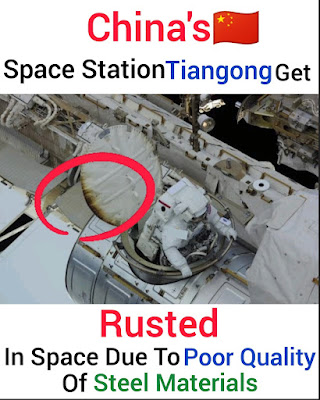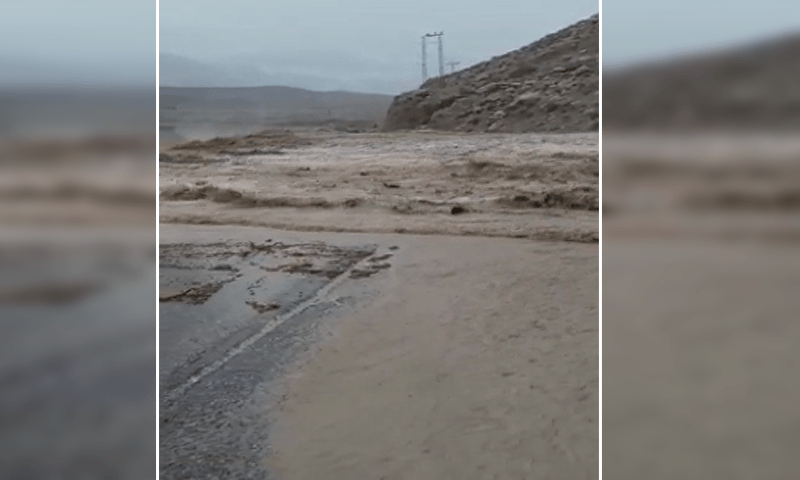Chinese Space Stations Gets Rusted?
Chinese Space Stations Gets Rusted?
China successfully placed its first crew members aboard its Tiangong space station, which is still under construction. Three
taikonauts (astronauts) boarded the Tianhe core space station module in orbit, marking a new milestone in the Middle Kingdom’s rise as a global leader in space. While the launch of the Shenzhou-12 mission is significant on its own right as a demonstration of China’s space program, it also highlights growing concerns about Chinese ambitions in space.The Shenzhou-12, or “Divine Boat” mission, is the seventh crewed Chinese spaceflight in history and China's first space manned mission since 2016. Three astronauts, Commander Nie Haisheng, Liu Boming and Tang Hongbo, took off aboard a Long March 2F rocket launched from the Jiuquan Satellite Launch Center in Inner Mongolia on June 17. Seven hours after launch, the crew successfully docked with the Tianhe module in low Earth orbit (LEO) at an altitude of around 236 miles. The Chinese astronauts will spend three months aboard the Tianhe bringing the module online and conducting tests of its systems ahead of other planned manned missions. Other modules will be added to the Tianhe and expanded into the full Tiangong space station in subsequent launches planned for later this year.
message-editor%2F1623946971855-shenzhou-12_roll_out_01.png
Shenzhou-12 being rolled to its launch site., China News Service/Public Domain
In a statement translated by the BBC, Commander Nie said the mission will be difficult and will help further the goal of establishing a Chinese space station. "We need to set up our new home in space and test a series of new technologies. So, the mission is tough and challenging. I believe with the three of us working closely together, doing thorough and accurate operations, we can overcome our challenges. We have the confidence to complete the mission."
Shenzhou-12 marks the second flight to the Tianhe module after it was placed in orbit. An unmanned supply flight docked with the module in May 2021, and two more launches, the unmanned Tianzhou-3 and the manned Shenzhou-13, will follow later this year.The 54-foot-long, 14-foot diameter cylindrical Tianhe core module was launched into orbit in April 2021 and includes living quarters for up to three crewmembers, life support systems, and power, propulsion, navigation, and guidance features for the entire Tiangong space station, which is expected to be completed by 2022. The entire module has just 1765 cubic feet of space for all of its equipment and systems in addition three crew members, making the three month stay for these taikonauts fairly spartan in terms of living conditions.
message-editor%2F1623962192858-interior_of_tianhe_during_the_shenzhou_12_mission11.jpg
The interior of the Tianhe cabin module, Public Domain
Aside from the Tianhe module, two laboratory cabin modules, the Mengtian and Wentian, will be added to the Tiangong space station in later missions planned for 2022. Both of those modules will expand the station's navigation, propulsion and orientation capabilities in addition to enabling crew members to conduct scientific and technical experiments both inside and outside of the modules. In addition, China plans to launch a companion space telescope capable of independent orbit as well as being able to dock with Tiangong that is claimed to have a viewing angle hundreds of times wider than that of the Hubble Space Telescope. Once completed, the Tiangong space station will have a mass roughly one-sixth of the ISS and will measure roughly 60 feet in length. The entire station has just 3,884 cubic feet of habitable space, and can house three astronauts. That makes Tiangong roughly the same size as the retired Russian Mir space station or America's first space station, Skylab. Both of those space stations also had a maximum crew of three.
message-editor%2F1623952358104-labmodules.png
Public Domain
As progress on Tiangong is being made, the International Space Station (ISS) continues to encounter a range of problems and malfunctions. Just this week, astronauts were unable to conduct a planned installation of new solar panels due to technical issues and spacesuit errors. Last year, the ISS experienced a significant air leak and the breakdown of one of its critical life-support systems. The ISS has been in space for over twenty years now and its age is beginning to show, all while China continues to advance development of its own brand new space station



Comments
Post a Comment